Companion planting with yarrow companion plants is a valuable technique that enriches your garden’s vitality and yield while introducing aesthetic appeal and variety to your outdoor space. Yarrow, renowned for its graceful foliage and vibrant blossoms, emerges as a flexible companion to numerous plant species, fostering a flourishing ecosystem.
Yarrow’s presence attracts a myriad of beneficial insects, such as bees and butterflies, essential for pollination. This aids in the growth and reproduction of nearby plants, including hydrangeas and flowering perennials, ensuring a bountiful and vibrant garden.
Yarrow in landscape acts as a natural border plant, defining garden edges with its graceful form and providing a transition between different areas. Its resilience makes it suitable for various environments, including dry, sunny locations where it thrives alongside drought-tolerant plants like lavender and California poppies.
Native to many regions, yarrow contributes to ecological balance by supporting native wildlife and promoting biodiversity. Its ability to attract pollinators and repel pests, such as ground squirrels and cucumber beetles, reduces the need for chemical pest control methods, aligning with principles of integrated pest management.
Best Yarrow Companion Plants
Chives: Enhancing Yarrow’s Growth
Chives are excellent companions for yarrow, contributing to its overall health and vigor. By planting chives alongside yarrow, gardeners can create a symbiotic relationship where both plants benefit. Chives, with their slender green stems and delicate purple flowers, not only add visual interest to the garden but also attract beneficial insects like bees and hoverflies. These insects aid in pollination and pest control, ensuring a thriving environment for yarrow to flourish.
Lavender: Aromatic Companions for Yarrow
Lavender and yarrow make a delightful pairing in any garden setting. Lavender’s fragrant blooms and silvery foliage complement yarrow’s feathery leaves, creating a visually appealing contrast. Moreover, the strong scent of lavender acts as a natural deterrent against pests, helping to protect yarrow from potential threats. Together, these two plants create a harmonious environment that promotes growth and attracts beneficial insects, such as butterflies and bees.
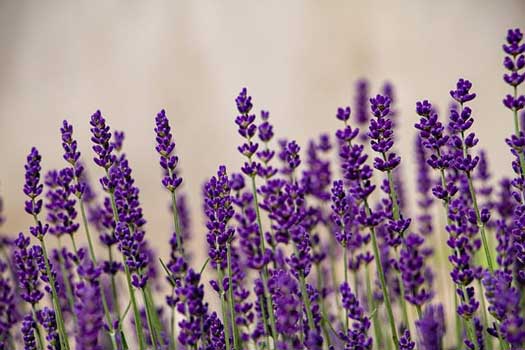
Tomatoes: Supporting Yarrow’s Growth
Tomatoes and yarrow can coexist harmoniously in the garden, each offering unique benefits to the other. Tomatoes provide structural support for yarrow, allowing it to grow upright and reach its full potential. In return, yarrow’s dense foliage helps shade the soil around tomato plants, conserving moisture and reducing weed growth. Additionally, yarrow’s ability to attract pollinators enhances tomato yields, resulting in a bountiful harvest for gardeners to enjoy.
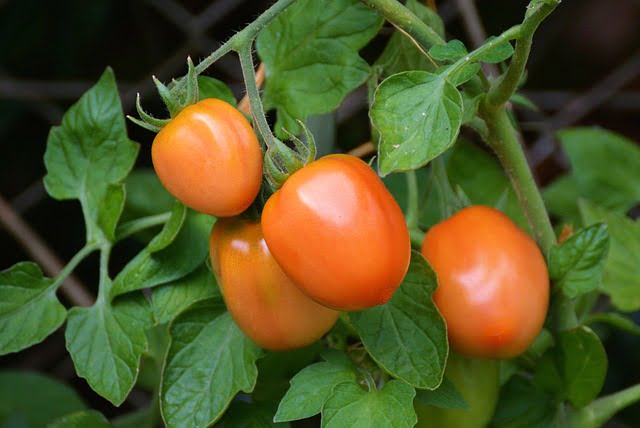
Peppers: Thriving Alongside Yarrow
Yarrow and peppers form a dynamic duo in the garden, complementing each other’s growth patterns and characteristics. Peppers, with their compact growth habit and vibrant fruits, thrive when planted near yarrow. Yarrow’s feathery foliage helps to regulate soil moisture levels and suppress weed growth, creating an ideal environment for pepper plants to flourish. Furthermore, yarrow’s ability to attract beneficial insects benefits pepper plants by enhancing pollination and natural pest control.
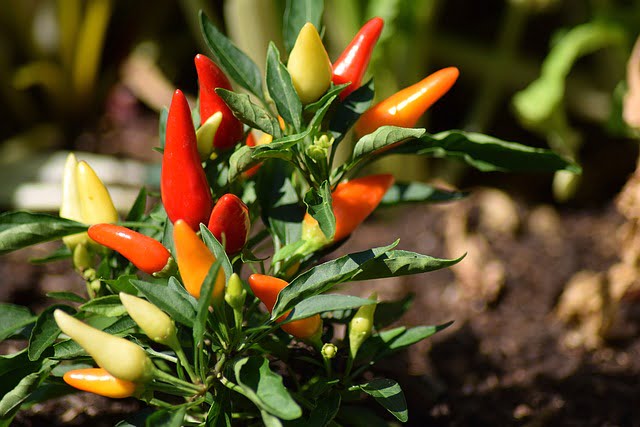
Cabbage: Beneficial Partners with Yarrow
Cabbage and yarrow make beneficial companions in the garden, each contributing to the other’s well-being. Cabbage plants, with their large leaves and dense foliage, provide shade and protection for yarrow, helping to conserve moisture and reduce stress during hot weather. In return, yarrow’s aromatic foliage acts as a natural repellent against pests, helping to deter cabbage-loving insects and minimize damage to the crop. Together, these plants create a mutually beneficial relationship that promotes a healthy and productive garden.
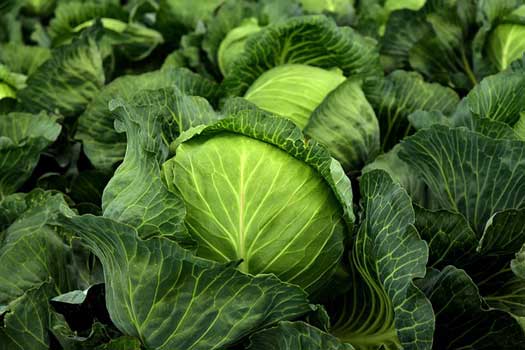
Chamomile: Soothing Yarrow’s Surroundings
Chamomile and yarrow create a tranquil and harmonious garden bed when planted together. Chamomile’s delicate white flowers and aromatic foliage add beauty and fragrance to the garden, while yarrow’s feathery leaves provide a lush backdrop. Additionally, chamomile’s calming properties extend to yarrow, promoting overall plant health and resilience. Together, these plants create a serene and inviting space that encourages relaxation and enjoyment for both humans and beneficial insects alike.
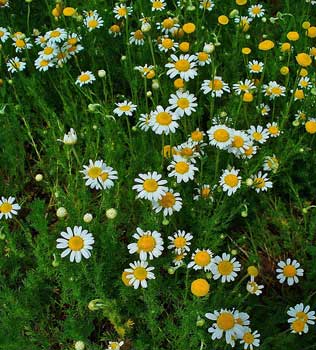
Oregano: Flavorful Complements to Yarrow
Oregano and yarrow form a flavorful and beneficial partnership in the garden. Oregano’s aromatic leaves not only add culinary value but also serve as a natural pest deterrent, helping to protect yarrow from harmful insects. In addition, oregano’s dense growth habit and spreading nature provide ground cover, suppressing weed growth and conserving soil moisture for yarrow. Together, these two plants create a thriving ecosystem that supports biodiversity and enhances the overall health of the garden.
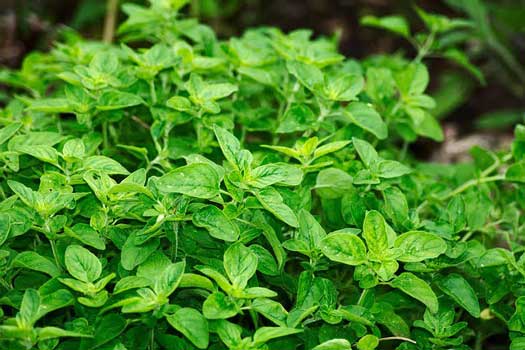
Thyme: Fragrant Allies for Yarrow
Thyme and yarrow make fragrant allies in the garden, combining their aromatic qualities to create an inviting and vibrant space. Thyme’s low-growing habit and small, delicate leaves complement yarrow’s upright growth, adding texture and visual interest to the garden bed. Moreover, thyme’s strong scent acts as a natural insect repellent, helping to protect yarrow from pests and diseases. Together, these two herbs create a delightful sensory experience for gardeners while promoting a healthy and thriving garden environment.

Basil: Culinary Companions with Yarrow
Basil and yarrow make excellent companions in the garden, offering both culinary and aesthetic benefits. Basil’s lush foliage and vibrant green leaves add beauty and vibrancy to the garden bed, while yarrow’s feathery foliage provides a contrasting backdrop. Additionally, basil’s aromatic leaves enhance the flavor of dishes when paired with yarrow in culinary creations. Furthermore, yarrow’s ability to attract beneficial insects benefits basil plants by promoting pollination and natural pest control. Together, these plants create a dynamic and productive garden space that delights the senses and nourishes the body.

Rosemary: Aromatic Partners for Yarrow
Rosemary and yarrow form a dynamic duo in the garden, combining their aromatic qualities to create a delightful sensory experience. Rosemary’s woody stems and fragrant foliage add depth and complexity to the garden bed, while yarrow’s delicate flowers and feathery leaves provide a soft and inviting backdrop. Additionally, rosemary’s strong scent acts as a natural deterrent against pests, helping to protect yarrow from potential threats. Together, these plants create a harmonious environment that promotes relaxation and enjoyment for both humans and beneficial insects.

Marigolds: Vibrant Companions for Yarrow
Marigolds and yarrow form a vibrant partnership in the garden, adding color and beauty to any landscape. Marigolds’ bright blooms and lush foliage create a stunning contrast to yarrow’s delicate flowers and feathery leaves, enhancing the visual appeal of the garden bed. Additionally, marigolds are known for their ability to repel pests, including nematodes and aphids, which helps to protect yarrow from potential damage. Together, these plants create a cheerful and inviting environment that attracts beneficial insects and promotes a healthy garden ecosystem.

Nasturtiums: Companionable Blooms with Yarrow
Nasturtiums and yarrow make excellent companions in the garden, combining their colorful blooms and attractive foliage to create a visually striking display. Nasturtiums’ vibrant flowers and round, peppery leaves add a pop of color and texture to the garden bed, complementing yarrow’s delicate appearance. Additionally, nasturtiums are known for their ability to attract pollinators and repel pests, which benefits yarrow by promoting pollination and reducing pest pressure. Together, these plants create a dynamic and harmonious garden space that is both beautiful and functional.
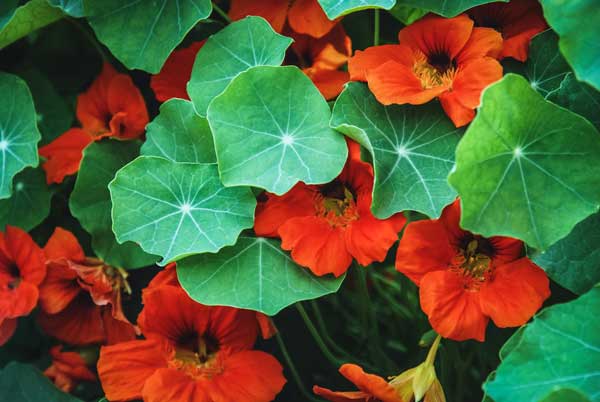
Dill: Fragrant Allies for Yarrow
Dill and yarrow form a fragrant and beneficial partnership in the garden, offering both culinary and ornamental value. Dill’s fern-like foliage and delicate yellow flowers add texture and visual interest to the garden bed, while yarrow’s feathery leaves and colorful blooms provide a soft and inviting backdrop. Additionally, dill is known for its strong scent, which can help to mask the scent of yarrow and deter pests. Furthermore, dill attracts beneficial insects such as ladybugs and lacewings, which can help to control pest populations and promote a healthy garden ecosystem. Together, these plants create a delightful and aromatic garden space that is both functional and beautiful.

Sunflowers: Towering Complements to Yarrow
Sunflowers and yarrow make an impressive duo in the garden, combining their towering heights and cheerful blooms to create a stunning focal point. Sunflowers’ tall stalks and large, showy flowers add vertical interest to the garden bed, while yarrow’s delicate foliage and colorful blooms provide a complementary contrast. Additionally, sunflowers attract pollinators such as bees and butterflies, which can benefit yarrow by promoting pollination and increasing seed production. Together, these plants create a striking and dynamic garden space that is sure to capture the attention of both humans and wildlife.
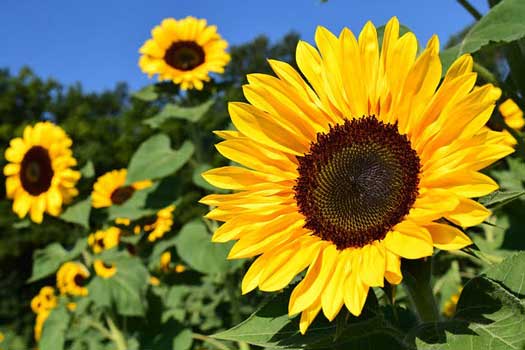
Echinacea (Coneflowers): Resilient Partners for Yarrow
Echinacea, also known as coneflowers, and yarrow make resilient companions in the garden, offering both beauty and resilience to any landscape. Echinacea’s bold blooms and sturdy stems add structure and color to the garden bed, while yarrow’s feathery leaves and delicate flowers provide a soft and inviting backdrop. Additionally, echinacea is known for its medicinal properties, which can help to support the health and vitality of yarrow and other nearby plants. Furthermore, echinacea attracts beneficial insects such as bees and butterflies, which can help to pollinate yarrow and promote a healthy garden ecosystem. Together, these plants create a robust and vibrant garden space that is both beautiful and functional.
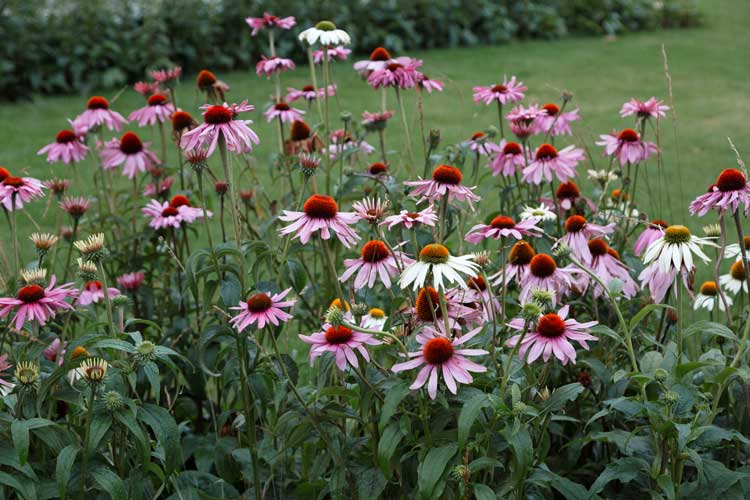
Coreopsis: Cheerful Allies for Yarrow
Coreopsis and yarrow create a cheerful partnership in the garden, adding brightness and charm to any landscape. Coreopsis’ daisy-like blooms and slender stems provide a burst of color and texture, complementing yarrow’s delicate flowers and feathery foliage. Additionally, coreopsis is known for its resilience and ability to thrive in various conditions, making it a reliable companion for yarrow. Moreover, coreopsis attracts beneficial insects such as bees and butterflies, which can help to pollinate yarrow and enhance its overall health. Together, these plants create a joyful and inviting garden space that is sure to uplift the spirits of all who encounter it.
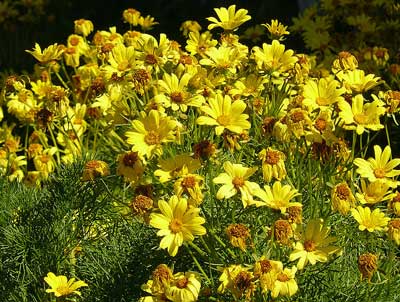
Sedum: Drought-Tolerant Partners with Yarrow
Sedum and yarrow make excellent companions in the garden, particularly in dry or rocky areas where water is scarce. Sedum’s succulent foliage and low-growing habit provide a drought-tolerant ground cover that complements yarrow’s feathery leaves and colorful blooms. Additionally, sedum’s ability to thrive in harsh conditions makes it an ideal companion for yarrow, as both plants can withstand periods of drought and heat. Furthermore, sedum attracts beneficial insects such as bees and butterflies, which can help to pollinate yarrow and promote a healthy garden ecosystem. Together, these plants create a resilient and beautiful garden space that requires minimal maintenance and water.
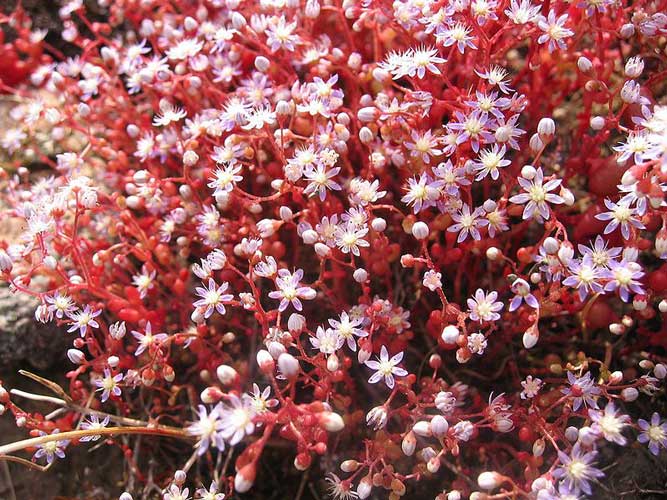
Bee Balm (Monarda): Attracting Pollinators to Yarrow
Bee balm, also known as Monarda, and yarrow make a dynamic duo in the garden, attracting pollinators and adding color and fragrance to any landscape. Bee balm’s vibrant flowers and aromatic foliage create a striking focal point in the garden bed, while yarrow’s delicate blooms and feathery leaves provide a soft and inviting backdrop. Additionally, bee balm is a magnet for bees, butterflies, and hummingbirds, which are essential pollinators for yarrow and other nearby plants. Furthermore, bee balm’s strong scent can help to mask the scent of yarrow and deter pests, creating a harmonious and pest-resistant garden environment. Together, these plants create a buzzing and vibrant garden space that is alive with activity and beauty.
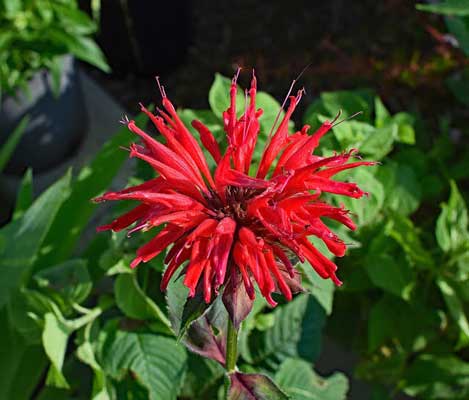
Salvia: Vibrant Companions for Yarrow
Salvia and yarrow form a vibrant partnership in the garden, combining their colorful blooms and attractive foliage to create a visually stunning display. Salvia’s tall spikes of flowers and aromatic leaves add height and structure to the garden bed, while yarrow’s delicate flowers and feathery foliage provide a soft and airy backdrop. Additionally, salvia is a favorite of bees and butterflies, which are important pollinators for yarrow and other nearby plants. Furthermore, salvia’s strong scent can help to mask the scent of yarrow and deter pests, creating a harmonious and pest-resistant garden environment.
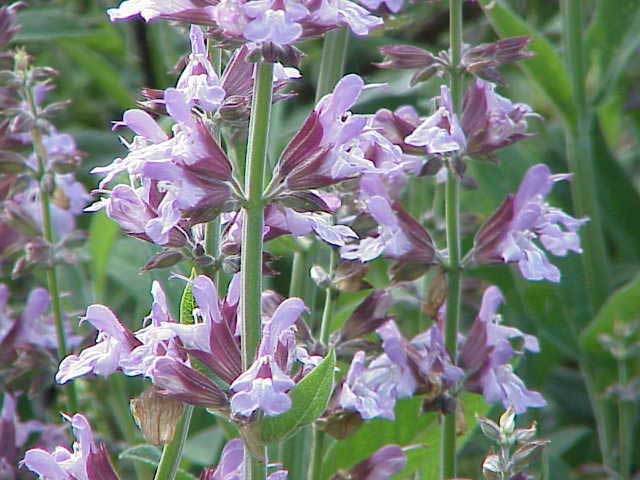
Marjoram: Aromatic Allies for Yarrow
Marjoram and yarrow form a delightful partnership in the garden, combining their aromatic qualities and culinary uses to enhance any landscape. Marjoram’s fragrant foliage and delicate flowers add a sweet and spicy aroma to the garden bed, complementing yarrow’s soft and airy appearance. Additionally, marjoram is known for its culinary versatility, adding flavor and depth to a variety of dishes. Furthermore, marjoram attracts beneficial insects such as bees and butterflies, which can help to pollinate yarrow and promote a healthy garden ecosystem. Together, these plants create a fragrant and flavorful garden space that is both beautiful and functional.
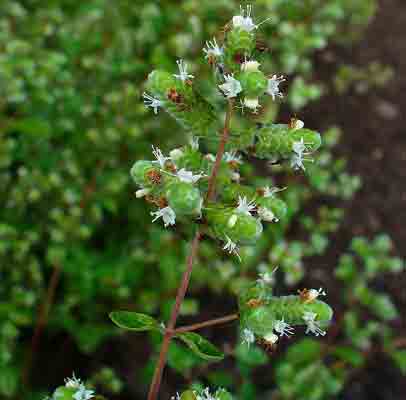
Aster: Autumnal Companions with Yarrow
Asters and yarrow make charming companions in the autumn garden, adding color and vibrancy to the landscape as summer transitions to fall. Asters’ daisy-like blooms and bushy growth habit provide a burst of late-season color that complements yarrow’s delicate flowers and feathery foliage. Additionally, asters are beloved by bees and butterflies, which are important pollinators for yarrow and other nearby plants. Furthermore, asters’ strong stems and robust growth make them a sturdy companion for yarrow, providing support and structure as the growing season comes to a close. Together, these plants create a vibrant and festive garden space that celebrates the beauty of the autumn season.
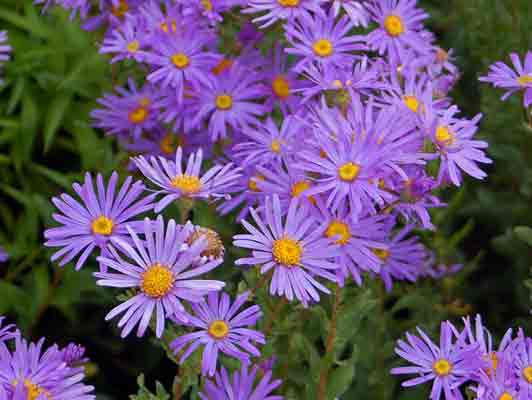
Cucumbers: Refreshing Companions for Yarrow
Cucumbers and yarrow make refreshing companions in the garden, offering both culinary delights and visual appeal. Cucumbers’ trailing vines and crisp, refreshing fruits add a touch of freshness to the garden bed, complementing yarrow’s delicate blooms and feathery foliage. Additionally, cucumbers are known for their thirst, drawing moisture from the soil and helping to maintain a balanced environment for yarrow and other nearby plants. Furthermore, yarrow’s ability to attract beneficial insects such as bees and butterflies can benefit cucumbers by promoting pollination and increasing yields. Together, these plants create a harmonious and productive garden space that is both beautiful and bountiful.

Broccoli: Nutritious Allies for Yarrow
Broccoli and yarrow make nutritious allies in the garden, combining their health benefits and aesthetic appeal to create a thriving landscape. Broccoli’s sturdy stems and nutritious florets add substance and texture to the garden bed, complementing yarrow’s delicate flowers and feathery foliage. Additionally, broccoli is known for its nutrient-rich properties, providing essential vitamins and minerals to support overall plant health. Furthermore, yarrow’s ability to attract beneficial insects such as bees and ladybugs can benefit broccoli by promoting pollination and natural pest control. Together, these plants create a vibrant and resilient garden space that nourishes both body and soul.

Onions: Flavorful Companions with Yarrow
Onions and yarrow make flavorful companions in the garden, offering both culinary versatility and visual interest. Onions’ slender green stems and pungent bulbs add depth and flavor to the garden bed, complementing yarrow’s delicate blooms and feathery foliage. Additionally, onions are known for their ability to deter pests, including aphids and onion flies, which can benefit yarrow by reducing pest pressure. Furthermore, yarrow’s ability to attract beneficial insects such as bees and hoverflies can benefit onions by promoting pollination and increasing yields. Together, these plants create a dynamic and flavorful garden space that is both practical and beautiful.

Arugula: Peppery Partners for Yarrow
Arugula and yarrow make peppery partners in the garden, offering both culinary zest and visual appeal. Arugula’s delicate leaves and spicy flavor add a kick to salads and dishes, complementing yarrow’s delicate blooms and feathery foliage. Additionally, arugula is known for its rapid growth and resilience, making it a reliable companion for yarrow in the garden bed. Furthermore, yarrow’s ability to attract beneficial insects such as bees and butterflies can benefit arugula by promoting pollination and natural pest control. Together, these plants create a lively and flavorful garden space that is both delicious and delightful.
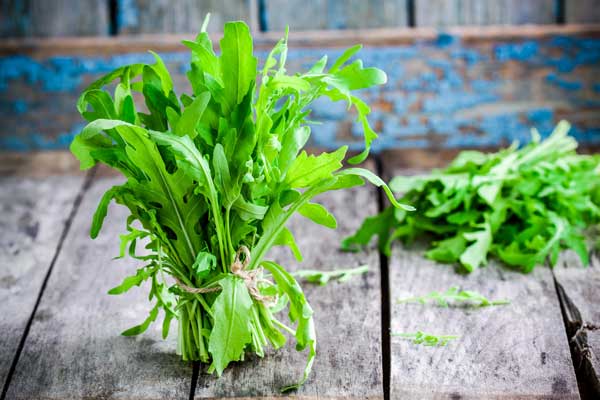
Cauliflower: Versatile Companions with Yarrow
Cauliflower and yarrow make versatile companions in the garden, offering both culinary potential and visual interest. Cauliflower’s compact growth habit and nutritious florets add substance and texture to the garden bed, complementing yarrow’s delicate blooms and feathery foliage. Additionally, cauliflower is known for its adaptability and resilience, making it a suitable companion for yarrow in various growing conditions. Furthermore, yarrow’s ability to attract beneficial insects such as bees and lacewings can benefit cauliflower by promoting pollination and natural pest control. Together, these plants create a diverse and dynamic garden space that is both practical and picturesque.

Wildflowers
Incorporating native wildflower alongside yarrow creates a vibrant and diverse ecosystem, attracting pollinators and enhancing the natural beauty of your garden.
Hydrangea
Adding a touch of elegance to your landscape, hydrangeas complement yarrow’s beauty with their lush blooms and provide a striking contrast in color and texture.

Daylily
With their bright and cheerful flowers, daylilies bring a burst of color to the flower garden, harmonizing beautifully with yarrow’s delicate blooms and creating a stunning floral display.
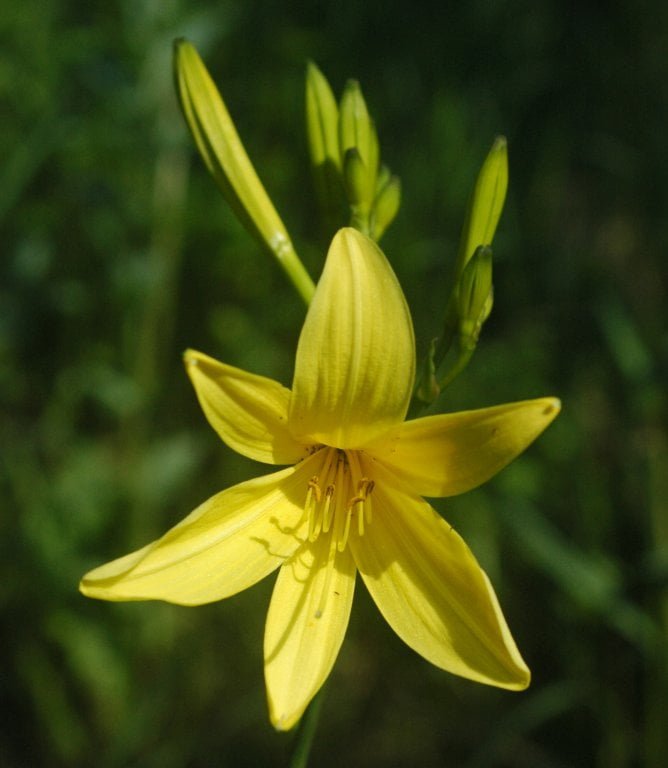
Bad Yarrow Companion Plants
When considering companion planting with yarrow, it’s essential to avoid certain plants that may not thrive well together. Here are some examples of what not to plant with yarrow:
Fennel: Fennel is known to inhibit the growth of nearby plants, including yarrow. Planting them together may hinder yarrow’s growth and overall health.
Shrubs and Trees: Yarrow prefers full sun and well-drained soil, so planting it under dense shrubs or trees may shade it excessively and lead to poor growth or even rotting.
Aggressive Spreaders: Avoid planting yarrow near plants known for aggressive spreading, as they may outcompete yarrow for resources and space in the garden.
Companion Planting Yarrow in Landscaping
How to plant a companion garden
In the realm of landscaping, integrating yarrow into your garden beds brings forth a multitude of benefits, enriching both the aesthetic appeal and ecological balance of your outdoor space.
Creating Borders with Yarrow
Yarrow serves as an excellent choice for border planting, delineating garden beds with its graceful foliage and vibrant blooms. By strategically placing yarrow along garden borders, you not only enhance the visual appeal but also establish a natural barrier that adds structure and definition to your landscape.
Embracing Native Plants
Incorporating native plants alongside yarrow promotes biodiversity and strengthens the resilience of your garden ecosystem. Native species, such as agapanthus and eschscholzia californica, harmonize effortlessly with yarrow, contributing to the local ecosystem while enhancing the overall beauty of your landscape.
Yarrow Companion Plants: Perennials and Shrubs
Pairing yarrow with perennial companions like lavandula angustifolia and shrubs such as weigela creates a dynamic and enduring garden display. These enduring plants complement yarrow’s resilience, ensuring year-round interest and vitality in your landscaping endeavors.
Promoting Ecological Balance
Yarrow’s presence in the garden fosters ecological balance, attracting beneficial insects and promoting natural pest management. By cultivating yarrow alongside other companion plants like common sage and ocimum basilicum, you establish a harmonious environment that supports a thriving ecosystem.

Yarrow Companion Plants : Frequently Asked Questions
Can we do Companion Planting Yarrow with Vegetables?
Yes, yarrow can be companion planted with vegetables to promote a healthy garden ecosystem. Its ability to attract beneficial insects and improve soil health makes it a valuable addition to vegetable gardens.
What Not to Plant with Yarrow?
Avoid planting yarrow near aggressive spreaders or plants sensitive to competition. Plants like fennel may inhibit yarrow’s growth, while dense shrubs or trees can overshadow it, hindering its development.
What Flowers to Plant with Yarrow?
Yarrow companion flowers, including lavender, roses, and native wildflowers. These companions not only enhance the visual appeal of your garden but also attract pollinators and promote biodiversity.
How Tall Does Yarrow Grow?
Yarrow typically grows between 1 to 3 feet tall, depending on the variety and growing conditions. Its airy foliage and colorful blooms add texture and height to garden beds, creating visual interest.
Are Lavender and Tomatoes Good Companions of Yarrow?
Yes, both lavender and tomatoes are compatible companions for yarrow. Lavender adds fragrance and attracts pollinators, while tomatoes benefit from yarrow’s ability to deter pests and improve soil health.
Are Yarrow and Roses Good Companion Plants?
Indeed, yarrow and roses make excellent companions in the garden. Yarrow’s delicate blooms and feathery foliage complement the elegance of roses, while its ability to attract beneficial insects contributes to overall garden health.
Yarrow Annual or Perennial?
Yarrow is primarily a perennial plant, meaning it regrows year after year from its roots. It’s known for its resilience and ability to withstand various growing conditions, making it a long-term asset in your garden. However, some gardeners also grow yarrow as an annual, replanting it each year for continuous blooms and foliage.
Conclusion Yarrow Companion Plants
In conclusion, companion planting yarrow offers a multitude of benefits for your garden, enhancing its health, beauty, and biodiversity. By strategically integrating yarrow alongside compatible companion plants, you create a harmonious and thriving ecosystem that attracts pollinators, deters pests, and promotes soil health.
With its resilience and versatility, yarrow serves as a valuable ally in gardening endeavors, whether in landscaping, vegetable gardens, or flower beds. Its delicate foliage and colorful blooms add visual interest and texture to your garden, creating a welcoming environment for both humans and wildlife.
Furthermore, yarrow’s status as a perennial plant ensures long-term sustainability and enjoyment, requiring minimal maintenance while providing maximum benefits. Whether you’re a novice gardener or a seasoned enthusiast, incorporating yarrow into your garden design is a surefire way to cultivate a vibrant and flourishing outdoor sanctuary.
In essence, companion planting yarrow not only elevates the aesthetic appeal of your garden but also fosters ecological balance and resilience, making it a rewarding and enriching experience for gardeners of all levels.
Conclusion Yarrow Companion Plants
In conclusion, companion planting yarrow offers a multitude of benefits for your garden, enhancing its health, beauty, and biodiversity. By strategically integrating yarrow alongside compatible companion plants, you create a harmonious and thriving ecosystem that attracts pollinators, deters pests, and promotes soil health.
With its resilience and versatility, yarrow serves as a valuable ally in gardening endeavors, whether in landscaping, vegetable gardens, or flower beds. Its delicate foliage and colorful blooms add visual interest and texture to your garden, creating a welcoming environment for both humans and wildlife.
Furthermore, yarrow’s status as a perennial plant ensures long-term sustainability and enjoyment, requiring minimal maintenance while providing maximum benefits. Whether you’re a novice gardener or a seasoned enthusiast, incorporating yarrow into your garden design is a surefire way to cultivate a vibrant and flourishing outdoor sanctuary.
In essence, companion planting yarrow not only elevates the aesthetic appeal of your garden but also fosters ecological balance and resilience, making it a rewarding and enriching experience for gardeners of all levels.

